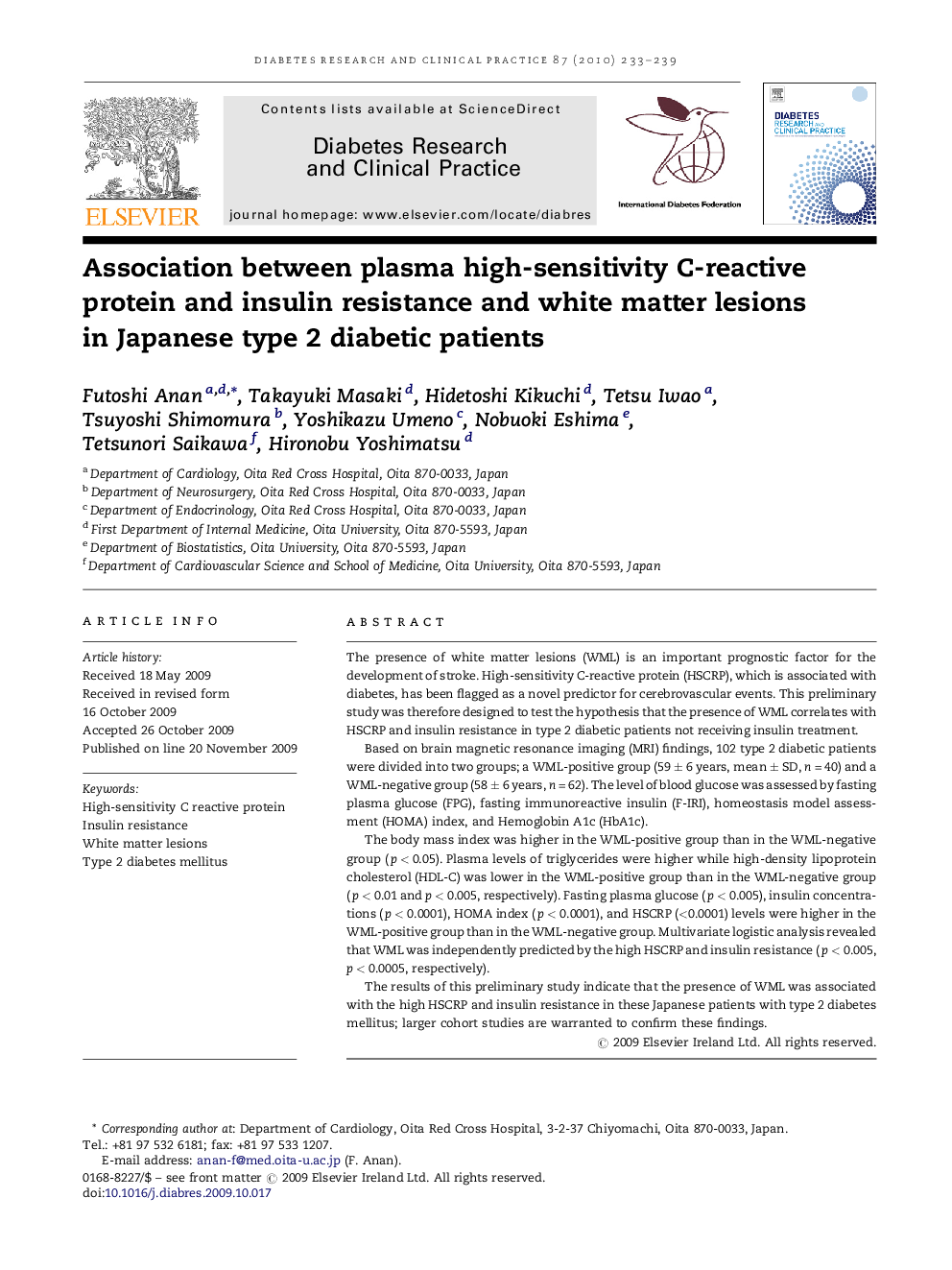| Article ID | Journal | Published Year | Pages | File Type |
|---|---|---|---|---|
| 2797674 | Diabetes Research and Clinical Practice | 2010 | 7 Pages |
The presence of white matter lesions (WML) is an important prognostic factor for the development of stroke. High-sensitivity C-reactive protein (HSCRP), which is associated with diabetes, has been flagged as a novel predictor for cerebrovascular events. This preliminary study was therefore designed to test the hypothesis that the presence of WML correlates with HSCRP and insulin resistance in type 2 diabetic patients not receiving insulin treatment.Based on brain magnetic resonance imaging (MRI) findings, 102 type 2 diabetic patients were divided into two groups; a WML-positive group (59 ± 6 years, mean ± SD, n = 40) and a WML-negative group (58 ± 6 years, n = 62). The level of blood glucose was assessed by fasting plasma glucose (FPG), fasting immunoreactive insulin (F-IRI), homeostasis model assessment (HOMA) index, and Hemoglobin A1c (HbA1c).The body mass index was higher in the WML-positive group than in the WML-negative group (p < 0.05). Plasma levels of triglycerides were higher while high-density lipoprotein cholesterol (HDL-C) was lower in the WML-positive group than in the WML-negative group (p < 0.01 and p < 0.005, respectively). Fasting plasma glucose (p < 0.005), insulin concentrations (p < 0.0001), HOMA index (p < 0.0001), and HSCRP (<0.0001) levels were higher in the WML-positive group than in the WML-negative group. Multivariate logistic analysis revealed that WML was independently predicted by the high HSCRP and insulin resistance (p < 0.005, p < 0.0005, respectively).The results of this preliminary study indicate that the presence of WML was associated with the high HSCRP and insulin resistance in these Japanese patients with type 2 diabetes mellitus; larger cohort studies are warranted to confirm these findings.
